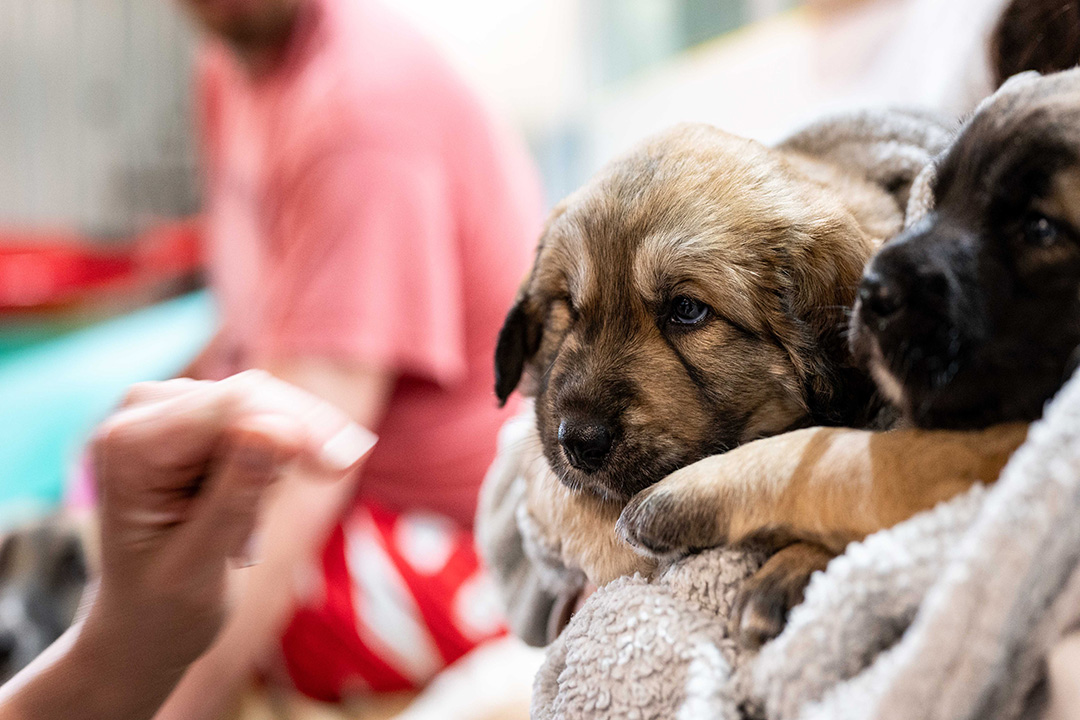
Vaccines key to preventing canine parvovirus
Canine parvovirus 2 (CPV-2), more commonly known as “parvo,” is a highly contagious virus that attacks a dog’s gastrointestinal tract. Unvaccinated puppies younger than four months are in the “high risk” category for this often-fatal disease.
By Jessica ColbyThe most common symptoms of parvo include vomiting, diarrhea, a loss of appetite and decreased energy. Continuous bouts of vomiting and diarrhea can lead to severe dehydration in affected dogs.
CPV-2 is also a very resilient virus and can live for a long time on surfaces — including kennels, food bowls, leashes, toys and collars. Due to parvo affecting white blood cell production, affected dogs often develop a secondary infection.
Dr. Jen Loewen, a specialist in emergency and critical care in the Western College of Veterinary Medicine’s (WCVM) Department of Small Animal Clinical Sciences, talks about how to treat parvovirus and the best way to prevent this serious canine illness.
How does a dog become infected?
Parvo is often spread through dog-to-dog contact as well as exposure to contaminated feces or the virus in the environment. Wildlife can also be infected with parvovirus and it’s possible for dogs to get infected if exposed to feces from wildlife.
How is a parvo patient treated?
The mainstay of treatment for dogs infected with parvo is supportive care while the virus runs its course. This includes making sure animals don’t get dehydrated by using fluid therapy, medications to prevent or stop vomiting and sometimes antibiotics to treat an infection or to prevent a secondary infection. We do not treat the virus itself; we just support the patient through the duration of the virus.
What is the best way to prevent parvo?
Parvovirus is best prevented with vaccination, and it’s important to remember that young puppies require a full series of multiple vaccinations before they become adequately protected against the virus. Puppies are not fully protected until two weeks after their final set of vaccines and it’s important that they continue to remain up to date on their vaccines. Additionally, until fully vaccinated, their exposure to other dogs (at dog parks, dog day cares or boarding kennels) should be minimized.
How do you diagnose parvovirus?
Other than clinical signs of the disease, veterinarians make a definitive diagnosis of parvovirus using a fecal swab test. Similar to a COVID test, the fecal swab is mixed with a fluid and then dropped onto the test. We then wait for the test to be run in the lab to confirm diagnosis.
Visit the American Veterinary Medical Association (AVMA) website for more information about canine parvovirus.
